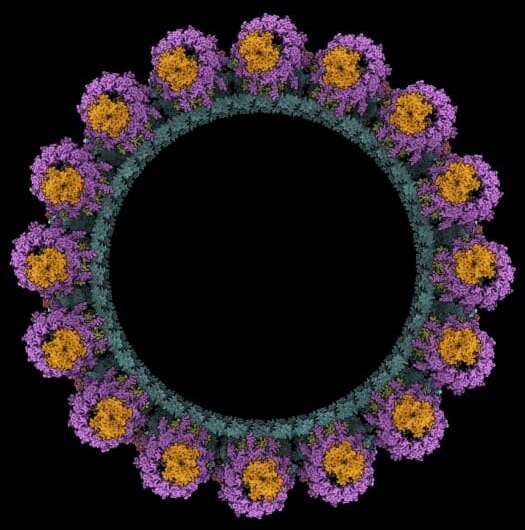
The researchers hope to work on this “for decades”:
How bacteria move around, survive, and cause infection in the body has fascinated scientists, but the roles of certain key players involved in the mechanism of motility are still poorly understood. Now, for the first time, Yale researchers have visualized a unique ring structure that stabilizes the motor of the flagellum and enhances bacterial movement. The researchers published their findings in Proceedings of the National Academy of Sciences on March 7…
“Before, we didn’t know what the stators do exactly to rotate the motor,” says Shuaiqi Guo, Ph.D., associate research scientist and first author of the study. In 2020, the team found that the stators not only experience a conformational change but also rotate, like gears driving the belt of a motor. These slender, flexible structures need to rotate very fast, and without stabilization this rapid spinning would introduce instability to the whole motor. The members of the Liu lab wanted to figure out how the stators stay in place as they rotate, and in their latest studies, they found that this ability is made possible by a protein called FliL.
“This protein has been very mysterious in the field for thirty years,” says Guo. “It’s very important for bacterial motility in complex environments, but scientists have been heatedly debating its function and structure.” …
“We’ve made incremental progress in understanding this fascinating machine,” says Liu. “We hope to continue to work on this for decades to solve how the flagella of different bacteria uniquely evolved. We’ve just touched the tip of the iceberg of understanding this beautiful structure.”
Isabella Backman/Yale University, “How bacteria swim: Researchers discover new mechanisms” at Phys.org (April 4, 2022)
These researchers hardly sound like they are very committed to the Darwinian “it all just gradually evolved” camp, even if they must — at times — say that to keep their jobs.
The paper requires a fee or subscription.